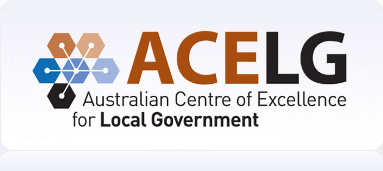Innovation round-up: Environmental sustainability
Innovation round-up: Environmental sustainability
Submitted by Chris Lewis on 15th June 2015
The Cairns Regional Council developed and deployed Australia's first local government Intranet-based Energy & Emissions System (EES) to collect, monitor and report on its energy consumption, energy costs and associated emissions. This effort aimed to incorporate energy management into Council's daily operations and decision-making, and future proof the organisation against increasing energy costs. The EES also aimed to increase the accuracy, transparency and efficient collection of Council's energy and emissions data, thus increasing awareness of the organisation's energy use. The EES was designed to align with the National Greenhouse Energy Reporting (NGER) framework. Read more »
Parramatta City Council was just one of the first councils in NSW to establish Environmental Upgrade Agreements (EUAs), a financing model that aims to make it easier for building owners to implement upgrades to their properties. Parramatta had, at the time, one of the lowest A-grade office vacancy rates, giving extra impetus to the development of a generation of modern, efficient and sustainable buildings. EUAs are agreements between a building owner, financier and local council to finance building upgrades to existing non-residential buildings. They have a number of advantages over traditional commercial arrangements, including removing the need for upfront capital, improved loan rates and repayments through cost savings. It was envisaged that EUAs in Parramatta's CBD alone could potentially attract $150 million of investment in building upgrades, create 148 full-time jobs, and reduce building owners' outgoing costs by $26 million through water and electricity savings. Read more »
Manningham Council (Victoria) realised its long-term vision for a sustainable future through a tri-generation system. Council commissioned a $38 million new Manningham City Square community facility adjacent to the Civic Offices in Doncaster, which included an art gallery and studios, library and café. The natural gas fired unit was expected to significantly reduce the environmental impact and ongoing energy costs of the building by generating electricity (385 kW) for heating and cooling and approximately 60-70 per cent. Manningham Council also tested three electric cars as part of a Victorian Government trial program with staff trialling the Mitsubishi i–MiEV, Nissan Leaf and Toyota Prius PHEV, each for a three–month period. There was an observation that renewable sources of power for charging, such as wind and solar, could reduce the greenhouse gas emissions of the cars by around 80 per cent compared to standard petrol or diesel cars. Read more »
 Chris Lewis is Visiting Fellow at ANZSOG Institute for Governance.
Chris Lewis is Visiting Fellow at ANZSOG Institute for Governance.



- Chris_Lewis's blog
- Log in or register to post comments
- 97 reads
Submitted by Chris Lewis on 15th June 2015
The Cairns Regional Council developed and deployed Australia's first local government Intranet-based Energy & Emissions System (EES) to collect, monitor and report on its energy consumption, energy costs and associated emissions. This effort aimed to incorporate energy management into Council's daily operations and decision-making, and future proof the organisation against increasing energy costs. The EES also aimed to increase the accuracy, transparency and efficient collection of Council's energy and emissions data, thus increasing awareness of the organisation's energy use. The EES was designed to align with the National Greenhouse Energy Reporting (NGER) framework. Read more »
Parramatta City Council was just one of the first councils in NSW to establish Environmental Upgrade Agreements (EUAs), a financing model that aims to make it easier for building owners to implement upgrades to their properties. Parramatta had, at the time, one of the lowest A-grade office vacancy rates, giving extra impetus to the development of a generation of modern, efficient and sustainable buildings. EUAs are agreements between a building owner, financier and local council to finance building upgrades to existing non-residential buildings. They have a number of advantages over traditional commercial arrangements, including removing the need for upfront capital, improved loan rates and repayments through cost savings. It was envisaged that EUAs in Parramatta's CBD alone could potentially attract $150 million of investment in building upgrades, create 148 full-time jobs, and reduce building owners' outgoing costs by $26 million through water and electricity savings. Read more »
Manningham Council (Victoria) realised its long-term vision for a sustainable future through a tri-generation system. Council commissioned a $38 million new Manningham City Square community facility adjacent to the Civic Offices in Doncaster, which included an art gallery and studios, library and café. The natural gas fired unit was expected to significantly reduce the environmental impact and ongoing energy costs of the building by generating electricity (385 kW) for heating and cooling and approximately 60-70 per cent. Manningham Council also tested three electric cars as part of a Victorian Government trial program with staff trialling the Mitsubishi i–MiEV, Nissan Leaf and Toyota Prius PHEV, each for a three–month period. There was an observation that renewable sources of power for charging, such as wind and solar, could reduce the greenhouse gas emissions of the cars by around 80 per cent compared to standard petrol or diesel cars. Read more »
 Chris Lewis is Visiting Fellow at ANZSOG Institute for Governance. Chris Lewis is Visiting Fellow at ANZSOG Institute for Governance. |
 |










